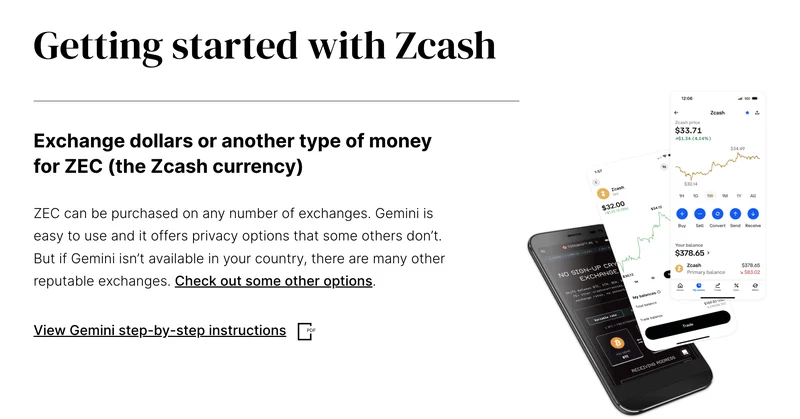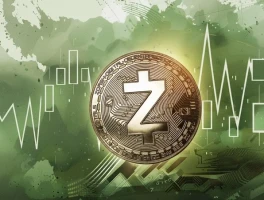The Anatomy of a Crypto Ghost Story: Zcash's Improbable 600% Rally
For the better part of three years, Zcash (ZEC) was a ghost. It haunted the back pages of crypto data sites, a relic from the 2016 cypherpunk era—a time when privacy was seen as a feature, not a bug. While the market chased AI tokens and Layer-2 scaling solutions, ZEC was a footnote, its proof-of-work consensus model and optional privacy features feeling almost quaint.
Then, almost overnight, the ghost came roaring back to life.
In the span of about a month, Zcash has staged one of the most violent and unexpected comebacks of 2025. The token surged more than 380%—to be more precise, the run from the September low of around $50 to the recent high of $374 represents a 648% increase. Its market capitalization swelled back to $5.8 billion, shoving it into the top 25 cryptocurrencies and liquidating nearly $2 million in short positions along the way. The question isn't if it happened, but why. My analysis suggests the answer is a textbook case of narrative-market divergence, where a potent, emotionally resonant story has dramatically outpaced the underlying quantitative reality.
The rally appears to be a perfect storm of catalysts. You have vocal endorsements from influential figures like Arthur Hayes and Mert Mumtaz, who reframed Zcash as "encrypted Bitcoin"—a scarce, sovereign asset with the privacy features Bitcoin lacks. You have the Grayscale ZEC Trust offering eligible investors a regulated exposure vehicle. And you have a broader cultural moment where anxieties over financial surveillance, digital IDs, and AI-powered transaction tracing are palpable. This has turned privacy from a niche concern into an "ideological trade."
But the primary accelerant appears to be a widespread misconception. A significant portion of the online chatter, the anecdotal data set driving retail interest, has centered on an impending Zcash halving in November 2025. This event, which slashes miner rewards to control inflation, is a historically bullish narrative for proof-of-work coins. There’s just one problem: it’s not happening. The last Zcash halving occurred in November 2024; the next isn't scheduled until late 2028. That a rally of this magnitude could be fueled, in part, by a factually incorrect catalyst is a stark reminder of how disconnected price action can be from fundamentals.
The Signal Hiding Beneath the Noise
While the price chart screams speculative mania, a different, more deliberate story is being told on-chain. This is where I find the data genuinely compelling. The core premise of Zcash isn't just its price, but its usage as a private financial tool. The key metric for this is the "shielded supply"—the total amount of ZEC held in private addresses that use zero-knowledge proofs (zk-SNARKs) to obscure transaction details.

Zcash shielded supply hits 4.5 million ZEC as privacy narrative reignites and token surges 7x.
This isn't just a vanity metric. Every coin that moves into a shielded pool increases the "anonymity set," making it harder to trace any single transaction. It’s like adding more hay to the haystack to hide the needle. Unlike simply holding ZEC in a wallet, shielding is an active, opt-in choice that demonstrates user trust and intent. It signifies a belief in the network's core value proposition. The recent growth has been driven almost entirely by Orchard, the network's newest and most secure privacy protocol, indicating that engaged users are adopting the latest tech.
Here we have a fascinating quantitative discrepancy. The price action is a parabolic, vertical ascent driven by hype and a false rumor. The growth in shielded supply, however, is a steady, upward-sloping curve. It’s the difference between a firework and a growing tree. One is spectacular but fleeting; the other is slow, organic, and foundational.
This foundational growth is getting a boost from real technical progress. The project is developing a new zero-knowledge architecture to improve performance, and new solutions like Encifher are emerging to bring ZEC’s privacy guarantees to other ecosystems like Solana. By wrapping ZEC into an encrypted asset (eZEC) on Solana, users can interact with DeFi applications without exposing their balances or transaction history. This is the unsexy, grinding work of development that builds long-term value, but it rarely makes for a viral tweet. The market is pricing Zcash based on the firework, while the real signal may be the slow, quiet growth of the tree.
A Speculative Fever on Bedrock of Code
So, what's the real story here? The Zcash rally is a classic collision of two realities. The market has priced in a revolution fueled by ideology, influencer marketing, and a factually incorrect halving narrative. This is unsustainable. A correction based on the "sell-the-news" dynamic—even when the news is false—seems not just possible, but probable.
However, dismissing the entire project would be a mistake. Beneath the speculative froth, the on-chain data shows a slow but steady increase in genuine adoption of its privacy features. The technical development is active and forward-looking. Zcash is a rare survivor from a previous crypto era, and its resilience has built a certain credibility. The market is acting on a ghost story, but the house it's haunting is built on a solid foundation of advanced cryptography. The price is a fantasy; the tech is real. The question for any serious analyst is which one will matter more in the long run.




